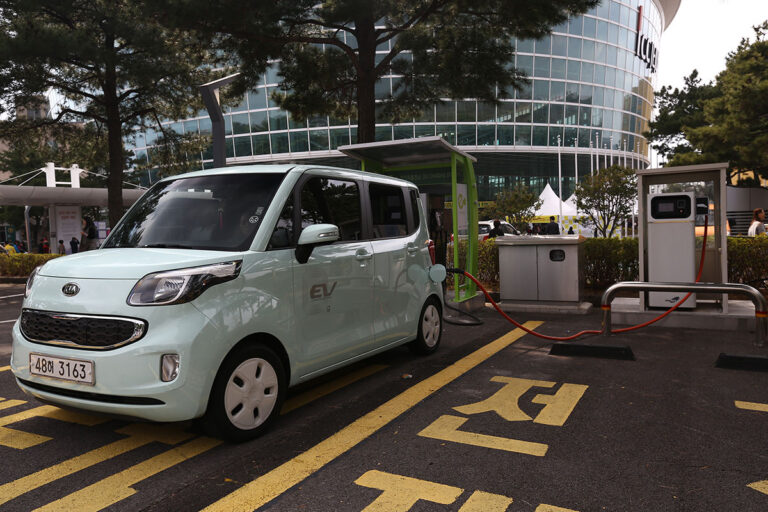As the world grapples with the impacts and implications of climate change, nations are under increasing pressure to implement strategies to reduce greenhouse gas (GHG) emissions. Charting a path to a low-emission society, however, is fraught with challenges; political, technological and social, but most influentially, economic challenges.
“The most significant challenge relates to higher costs,” says Walid Matar, an energy system modelling specialist at KAPSARC. “Ultimately, climate change mitigation is price inflationary. Will we be willing to pay substantially more for goods that require higher costs to produce? Will the demands drop for such goods? Would this cause a global drop in economic output?
“I believe the greatest challenge that lies ahead is balancing higher production costs while sustaining economic output as we implement emission reduction strategies over the coming decades.”
Responding to a global peril
The 2016 Paris Agreement was a pivotal moment in the global response to climate change. Signed by 196 countries, the agreement set out targets for reducing national GHG emissions over the coming decades, in an effort to limit global warming to 1.5 °C.
To fulfill its commitment, Saudi Arabia pledged to reduce its GHG by 278 million tons of carbon dioxide equivalent (CO2e) per year by 2030, as part of a nationally determined contribution (NDC). This reflects a reduction of more than 30% of the Kingdom’s emissions in 2022.
Approximately half of this reduction was proposed to come from structural reform of the energy sector. This would involve transitioning from oil-based energy generation to a 50/50 mix of natural gas and renewables such as solar and wind power. The remainder will be achieved through efficiency measures and diversifying the Kingdom’s economic outputs to be less reliant on hydrocarbons.
“Our interest in this policy response was to see whether there may be a lower-cost pathway to reduce CO2 emissions in the Saudi energy system than to enforce a 50/50 renewable energy/natural gas target on the power system and to displace all liquid fuels,” says Matar. “Most analytical frameworks used around the world do not take Saudi Arabia’s peculiarities, being a hydrocarbon-based economy, into consideration. KAPSARC, however, is in a unique position to be able to accurately model Saudi’s energy system to help inform policy responses.”
An energy model like no other
To answer such complex questions related to the Kingdom’s planned energy transition, Matar and his team developed the KAPSARC Energy Model (KEM). A comprehensive multisector energy system model, KEM was developed from the ground up for Saudi Arabia. It accounts for regional differences in energy cost and interregional transfer. It also considers economic drivers such as minimizing cost or maximizing profit, and intersectoral energy flows such as substitution of oil in the petrochemical and fertilizer sector with natural gas and ethane from the upstream oil and gas sector or naphtha from oil refining.
“KEM also distinguishes between oil and natural gas-fired power generation technologies and allows for the inclusion of carbon capture and storage (CCS) technology, including the capital and fixed operating costs of post-combustion technology, and the reduction in thermal efficiency of the power plant cycle,” says Matar.
Importantly, the KEM is designed to model the changing prices of fuel and CO2 over time, and the optimization of investments in different sectors to optimize costs or profits.
“Non-prescriptive, performance-based energy and climate policies lead to better outcomes in terms of suitability and cost-effectiveness.”
Evar Umeozor
“KAPSARC also has access to the most reliable and highest quality data needed for modeling, analysis, and inference,” says Matar’s colleague Evar Umeozor. “Some of the data comes from verifiable public sources, whereas some is proprietary information available through industry-standard sources. We also have a top-notch pool of experts in the fields of energy and climate policy.”
Reducing the cost of climate mitigation
Matar, Umeozor, and Noura Mansouri modelled a range of scenarios to assess the potential impact of different policies on GHG emissions. These include a baseline scenario, which assumes that the 2022 national policy settings remain unchanged. The second is the announced policy scenario (APS) that includes planned hydrocarbon price increases (fuel price reform) and the imposition of the 50/50 gas/renewable energy production target. The last scenario is carbon capture and storage (CCS) scenario in which highly efficient CCS is introduced in the energy and fertilizer sectors.
The modelling shows that the announced policies, augmented by CCS, can achieve significant reductions in emissions over the coming decades.
However, CCS and the complete shift away from liquid-fueled power generation to renewables and gas come at a high cost, estimated by the researchers to amount to US$150 billion of additional investment needed till 2030.
“We have seen much progress in the electric power system, especially in the development of solar photovoltaics, which have seen substantial declines in module costs in recent years,” says Matar. “But the transition still comes at a significant cost.”
The team then explored how the KEM would respond if given the simple goal of achieving the reduction target of 130 million tons CO2e in the energy system at least cost.
“Our modelling shows that imposing a CO2 cap, without prescribing higher fuel prices or forcing a transition to 50/50 renewable/gas power system, can achieve the same CO2 reductions while displacing less oil and without requiring installation of CCS,” says Matar. “This amounts to a cost savings of about US$70 billion to 2030, while still meeting climate policy goals.”
Under this capped emission scenario, the shadow cost of CO2, corresponding to the implicit marginal abatement cost of CO2, estimated by the model approaches $35 per ton CO2e by 2045, which would displace around half of the crude and fuel oil use in the Saudi energy system.
Challenges ahead
“The overall system cost needs to be considered and also optimized to make most low-carbon technologies cost-competitive compared with conventional technologies with entrenched supply chains,” says Umeozor. “A range of complementary technical developments are needed to drive down emissions, such as electrification of high-temperature industrial processes in a scalable and cost-effective way, as well as policy designs that recognize the natural contexts, conditions and capabilities toward emission reduction.”
The model suggests several interesting outcomes, including a significant expansion of investment in desalination plants. While little additional desalination capacity would have been introduced under the pre-2022 policy settings, 10 times the capacity would be installed under APS and 15 times capacity under CES. The researchers suggest that desalination is one of the lowest cost pathways to meeting the CO2 reduction cap, although this does not fall under any specific policy directive.
Conversely, reform of the emissions-intensive cement making sector turns out to be a very inefficient way to reach emission reduction targets, with the costly transition from crude oil to petroleum coke achieving relatively little in the way of emission reductions.
The CES also highlights the installation of CCS on new gas power generation plants as being a preferred low-cost path to emission mitigation, although these technologies are still early in their development.
“The key message is that non-prescriptive, performance-based energy and climate policies lead to better outcomes in terms of suitability and cost-effectiveness of identified solutions,” says Umeozor. “Through energy systems modeling such as using the KEM, we can gain non-prescriptive and optimal policy insights to inform policy design whether for energy, climate or economy objectives.”
Reference
Matar, W., Mansouri, N., and Umeozor, E. Energy Policy Pathways to Inform Climate Policy in Saudi Arabia. Journal of Cleaner Production, 445, 141190 (2024). | Article




